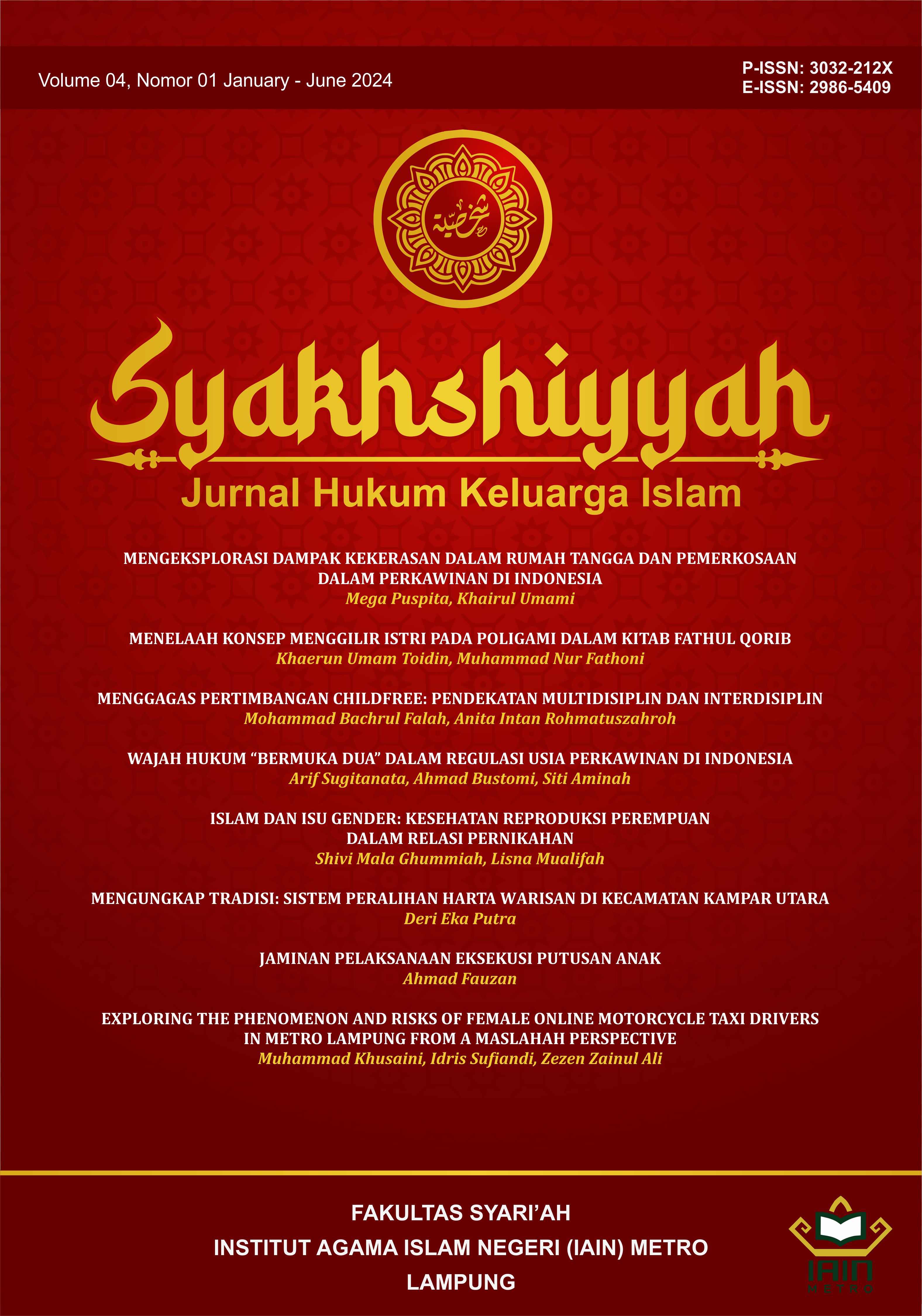Wajah Hukum “Bermuka Dua” dalam Regulasi Usia Perkawinan di Indonesia
DOI:
https://doi.org/10.32332/syakhshiyyah.v4i1.9174Keywords:
Two-Faced, Marriage Age, IndonesiaAbstract
The legal age of marriage in Indonesia has become a compelling issue and has been extensively studied by scholars. Although the national law stipulates that the legal age of marriage must be 19 years for both males and females, inpractice, some loopholes can be exploited, specifically through marriage dispensation. This article aims to elucidate the disparity between "law in the book" and "law in action." Using a literature review with a normative approach and employing Herbert Lionel Adolphus Hart's theory of legal expression as an analytical framework, this study finds that significant reforms have occurred in Indonesia's marriage law, as promulgated through Law No. 16 of 2019, whichraised the minimum legal age of marriage to 19 years for both males and females. This reform aims to reduce cases of early marriage, support gender equality, and improve the quality of life in line with international human rights standards. It is dubbed the "Front-Faced Law." On the other hand, Indonesia maintains flexibility in its legal system by allowing marriage dispensations, which provide exceptions to this rule under certain circumstances, referred to as the "Back-Faced Law." Itcreates a duality or "Two-Faced" nature in the legal system, reflecting a legal expression that balances the desire for progressive reform with the recognition of the need for fair and flexible policies in addressing the complexities of social realities.








